Give yourself the time to listen to this week's Naked Scientists Show, where we find out about the Body Clock! We discover the constant chemical cascade that keeps your clock in check, and how not seeing the sun leads to S.A.D. We probe the plant clock to explore how trees tell the time, and why even plants can suffer from jetlag. Plus, why Stradivarius' violins sound so good, why fun size snacks may be making you fat and how cuttlefish sneak a peak at their future food. Also, in Kitchen Science, Ben and Dave get water from flames!
In this episode
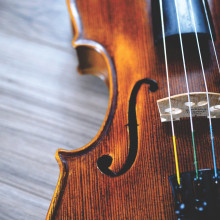
01:37 - Why Stradivarius violins sound so good
Why Stradivarius violins sound so good
Scientists have used a CT scanner and a modified version of a computer programme written to diagnose the chest disease emphysema to solve the mystery of why 300 year old Stradivarius and Guaneri violins sound so good.
Writing in the journal PLoS ONE, Leiden Univesity researcher Berend Stoel and Arkansas-based violin maker Terry Borman scanned 5 "classical" Stradivarius and Guaneri violins dating from 1715-1734, and 7 contemporary instruments. In order to understand how the wood might be contributing to the way a violin sounds they fed the scan results into a modified version of a computer programme used normally to calculate the lung densities of patients with emphysema!
The results showed intriguing differences in the wood structure between the two groups of instruments. Trees lay down annual growth rings corresponding to the production of new wood. In general, growth in the spring tends to be faster, softer and more porous so the resulting wood is therefore less dense than growth occurring later in the season.
But the CT scans showed that the classical instruments showed much less variation (or differential) in density between the early and late growth than modern instruments. Differentials in wood density will affect how well a piece of wood will vibrate and therefore the ultimate quality of the sound it can produce. Having more homogenous wood could therefore be the key to a much purer sound.
However, scientists still don't know why the classical wood shows this dramatic reduction in density. One possibility is that the weather in the 1700s, when there was a mini ice-age coinciding with a period of reduced solar activity called the Maunder mimimum, may have slowed tree growth leading to denser wood. More likely, however, is that the ancient craftsmen knew a chemical trick or two to alter the structure of the woods to get just the sound they were after.
"It's possible that you could use this CT technique to select different types of wood that would be more like the wood that Stradivarius used. But if you are a lousy violin maker and use the best wood, you will still end up with a very bad violin," says Stoel.
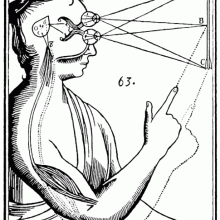
All in the mind’s eye
Has anyone ever let their imagination run away with them? For example, we recently had a problem with moths in our house, and for a while afterwards, I was convinced I could see moths everywhere. Luckily, I'm not going mad, as researchers from Vanderbilt University in the US have now proved that what you see with your 'mind's eye' might have a direct impact on what you see back in reality. This is the first study to show that imagining something changes your vision both while you are imagining it and afterwards.
To test how imagination affects perception of reality, the scientists asked people to imagine simple patterns of vertical or horizontal stripes. They then showed the volunteers a green horizontal stripey pattern to one eye and a red vertical stripey pattern to the other. This situation is difficult for the brain to process, so a person will tend to see each the images switching back and forth.
But in this case, the scientists found that people who had been thinking of vertical stripes were more likely to see the vertical striped pattern, while those who thought of horizontal stripes were more likely to focus on those. The team also found that showing volunteers a faint picture of either horizontal or vertical stripes before the experiment could also influence which pattern they saw in the test.
Although these are quite simple experiments, they suggest how imagining previous experiences, or expectations, might actually influence the things you see. And the team found that rather than needing to imagine something many times, just one thought could have an impact, under the right conditions.
The results of the study provide a new way for scientists to objectively measure how strong an individuals mental imagery might be, and how much it affects their perception of reality. So it could be a useful tool for studying the imagination - a topic that's very hard for researchers to investigate.

Food for thought: Why fun-sized foods won't ward off bulging waistline
A study on university students given packets of crisps to eat has shown that 'diet packs' of snacks lure lunchers into eating more than they otherwise would. Rik Peters and his colleagues at the University of Tilburg in the Netherlands recruited 140 volunteers to watch TV, and gave them either 2 large bags of crisps or 9 small bags of crisps to eat.
 Additionally, half the students were put into a weight-conscious mindset by weighing them in front of a mirror before the TV session started. The team then totted up how much the volunteers ate. Amongst the non-weighed participants, 75% opened their small bags and 50% opened their big bags of crisps; both groups ate about the same amount. But amongst the weight-conscious cohort, only 25% opened their bigs bags and actually ate LESS than the 59% who opened their small bags. Writing in the Journal of Consumer Research, the team think that the diet-conscious group exercised less self-control because it was a pre-portioned pack and therefore they could lower their dietary-guards and over indulge.
Additionally, half the students were put into a weight-conscious mindset by weighing them in front of a mirror before the TV session started. The team then totted up how much the volunteers ate. Amongst the non-weighed participants, 75% opened their small bags and 50% opened their big bags of crisps; both groups ate about the same amount. But amongst the weight-conscious cohort, only 25% opened their bigs bags and actually ate LESS than the 59% who opened their small bags. Writing in the Journal of Consumer Research, the team think that the diet-conscious group exercised less self-control because it was a pre-portioned pack and therefore they could lower their dietary-guards and over indulge.
So the moral of this story is that, when it comes to diet food, more is less!
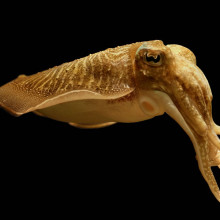
Clever cuttlefish peep before birth
For most animals, life before birth is a dark experience. For example, humans are trapped in the womb for nine months, and even animals and birds that hatch from eggs don't have much light reaching them. But now new research shows that cuttlefish may not be kept in the dark in the same way.
When cuttlefish eggs are laid, they're stained black with ink. But as the embryos develops and grows, the egg becomes see-through. Intriguingly, by this point, the baby cuttlefish's eyes are properly developed. So can they see they outside world from the comfort of their egg? New results from Anne-Sophie Darmaillacq and her team in France suggest they can, and that this might be vital for the cuttlefish to survive in the harsh world of the sea.
The researchers studied cuttlefish eggs laid in a tank, arranged in such a way that they were in view of another, separate tank before hatching. The team then put crabs into the other tank, or left it empty. This setup means that the cuttlefish aren't exposed to any chemical signals from the crabs, but on vision alone.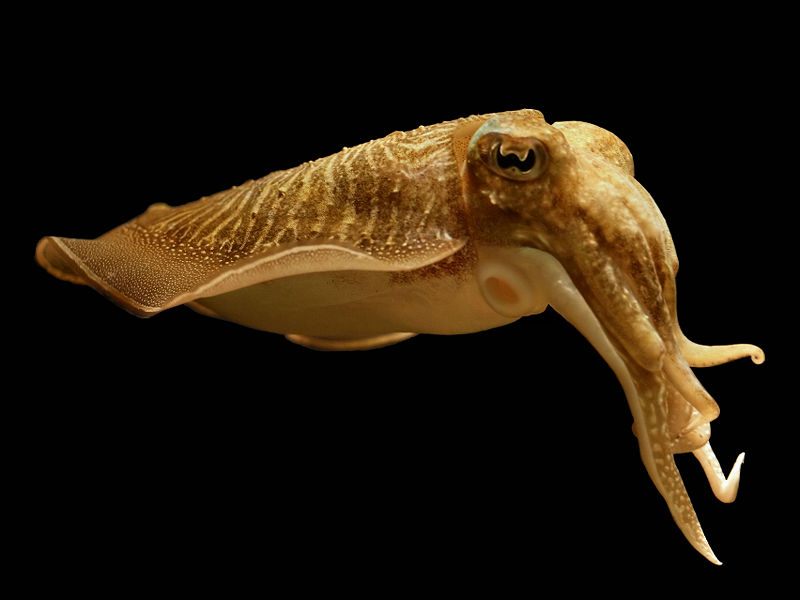
Once the cuttlefish hatch, they sink to the bottom of their tank, and lose sight of the crabs next door. Then the researchers caught the baby cuttlefish, and gave them a choice of crabs or cuttlefish to eat. And they found that if the cuttlefish has 'seen' crabs while they were still in their eggs, they clearly preferred crabs for dinner.
This is the first time that researchers have ever found evidence that embryos can use visual information before they are born. But why might it be so important for cuttlefish? These animals depends very strongly on vision - for example, as they change colour, shape and patterning for defence or communication.
But they hatch alone, and have no help from their parents to tell them how to find food. So perhaps the baby cuttlefish are learning about their potential menu choices before they're born, so they can get on with the business of feeding as fast as possible.
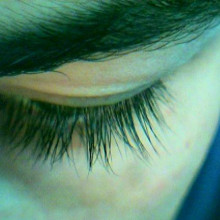
Why does some hair never stop growing?
Chris - It's a very good question. Why is it that your hair grows on your head can, in some people's cases, can reach their waists whereas eyelashes conveniently remain only a few millimetres long. If you had eyelashes that reached your waist that would make seeing quite difficult, I would imagine. Similarly pubic hair under you arms, for example. Why does that stay short and curly and the drop out before it gets really long whereas the hair on your head can become very long?
The answer is it's all down to genes and when you're developing as an embryo your body develops as a series of segments. Written into those segments is a genetic pattern that tells that bit of the body where it is in the body and anything that develops on that segment inherits that genetic pattern which dictates to it how it should grow and develop. If you look at how hairs work - hairs have three phases to their life cycle. They have what's called an anagen phase and this is where they grow. The hair follicle has a number of stem cells that are very, very active and they pump out keratin which is the hair chemical. Keratin forms a big polymer which is a filament for hair which you see. After the anagen phase, which can last anything from days - in the case of an eyelash that's about 2-3 weeks, to a head hair which can be three or four years. That determines how long the hair grows for its ultimate length. Then the hair goes into what's called a catagen phase. That's where the follicle switches off and the hair falls out.
Then there's a third phase which is called a telogen phase when the follicle rests. It then resets the system and the whole thing starts again. So the hair length is down to how long the hair grows for, the anagen phase, and that is determined by your genes. Basically the genes that are programmed into the bit of the body that's got the hair in it. Kat - I was thinking if you had some weird genetic mutation you could have pubic hair that grew down to your ankles!
Chris - Yeah, I suppose if you similarly transplanted head hair to your pubic region or vice versa you would get hair that had that behaviour because it had pre-programmed into it that way of growing. Kat - Freaky!
Chris - There's a company in America called Allergan. They're the company that brought you Botox. They've also got a drug for glaucoma which is this eye pressure problem where you have too much pressure inside your eye. This can damage your optic nerve. There's a drug called Lumigan which can be used to treat that. The generic name is bimatoprost for this. What they found is one of the side effects is it makes your eyelashes grow long in some people. They're actually applying to the FDA (that's the drug administration group in America) for permission to market this as an eyelash lengthener. The slight downside is that it also makes your eyes get darker and it also makes your eyelids get darker. The effect can be permanent. Not only will you have luscious lashes, you will also potentially have darker eyes and darker eyelids. If you don't use the same amount on both eyes the effect can end up being non-symmetrical. Kat - So you'd look like a panda.
Chris - You'd end up looking like a sort of David Bowie effect. It could be a bit dodgy.
Can we actually hear before we’re born?
Kat - I think the evidence suggests that you probably can. Obviously it's not hearing as in the sense that born people hear because that's all to do with air pressure. I think there's a lot of evidence that babies can really sense the vibrations in the fluid that's around their ears.
Chris - The US Navy did a study about five years ago where they took lambs that were developing inside the mother and they put a miniature microphone inside the ear of the developing lamb and another one in the fluid surrounding the lamb and then a microphone outside the sheep. They played sounds using a speaker and recorded from those three sites. They played back the sounds they recorded to a group of volunteers and asked them how much they could interpret from what they'd just heard from these recordings. They understood 100% of what was said using the microphone outside the sheep's body, they understood about 75% of what they recorded using the microphone sitting in the fluid around the baby inside the sheep and they understood a good 30-40% of what was being said from the recordings in the ear of the baby sheep. What this suggests to you is you should be very careful when you're talking around a pregnant woman because the baby may well be eavesdropping. Kat - No swearing!
Judith from Northampton got in touch to say: "My friends used to play the violin while I was pregnant, most notably Vivaldi or Bach. Once the baby was born whenever it heard a piece of music by Vivaldi or Bach it used to instantly fall asleep whilst other music would have no effect or might even make it cry. The baby must have recognised the music from when it was in the womb."

Is there a scientific way to measure human age which is equivalent to tree rings?
Chris - I was thinking about this because we talked on the Naked Scientists a little while back about how researchers in Scandinavia have worked out how long a fat cell survives inside a human body by using carbon dating. He's saying carbon dating can be used for rocks and things like tree rings to work out how old trees are, what about humans? The thing is when you take into your body some plant matter it's go carbon-14 from the environment. That gets incorporated into your body and therefore it gets written into your DNA if you have new cells being born. What these researchers, Kirsty Spalding and her colleagues, did (they published this in Nature a couple of months ago) what they did was to take fat cells and look at how much carbon-14 they had in them. As your fat cells age they'll lose their carbon-14. The amount of carbon-14 gives you an idea as to how recently that cell was born. It will have had new DNA put into it which would have had a fresh level of carbon-14 in it when it was born. They did actually show that fat cells have a lifespan of about ten years.
Kat - There's another way of doing it which is to look at your telomeres. Inside all our cells we have chromosomes. These are long lengths of DNA. At the end of them, in the same way that you have a little plastic cap on the end of shoelaces you have these structures called telomeres. These get shorter and shorter as we go through life. Every time a cell divides it loses a bit off the end of its telomeres. There may be some way of measuring human lifespan in terms of how long or how short your telomeres are. The trouble is that there's no standard length and people have different length telomeres depending on their genetic makeup. I know that Cancer Research UK is funding a project looking at how our genes determine our telomere lengths. It's actually linked to cancer risk. People who have very short telomeres are going to get shorter very quickly and that can actually increase the likelihood of getting cancer. Chris - So we could look at the cells, see what the length of the telomeres are and that would give you some idea as to the age of that cell?
Kat - It would give you some indication and maybe if you compared it to other cells in the body like maybe your germ cells that don't go through this kind of process.
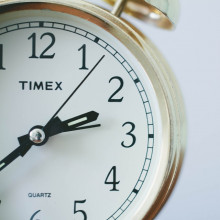
23:56 - Setting the Time on your Body Clock
Setting the Time on your Body Clock
with Professor Russell Foster, Oxford University
Kat - We're joined now by Professor Russell Foster. What do we mean by a body clock? What's actually going on here?
Russell - Each of us has an internal representation of a day which we use to fine-tune our physiology and behaviour to the varying demands of activity and rest. There's a very important structure right at the base of the brain called the suprachiasmatic nuclei (SCN). If this structure within the brain is destroyed as a result of a tumour or some other ghastly accident then these 24hr rhythms that we normally experience like sleep, wake and all the rest of it are lost. This clock is, in turn, set by exposure to the light-dark cycle. When we fly from let's say London to New York we eventually adapt to New York time because we experience the local light-dark cycle there. That talks to the SCN and that realigns our body clock to local time.
Chris - How do these cells actually work, Russell, to keep time?
Russell - The clock cells, you mean, or the light cells?
Chris - The clock cells.
Russell - Well, that's been an incredibly exciting area or research over the past ten years or so. At its core there's a feedback loop. A gene will produce a message. The message is then translated into a protein and then that protein will go into the nucleus and turn off its own gene. It's like a switch. The rate at which the gene is turned on or the rate at which the protein is produced, the rate at which the protein forms a complex of other proteins and then enters the nucleus are all critical in the developments of - or turning a switch into a 24 hour oscillation.
Chris - It's a bit like a genetic domino effect where one gene turns on, turns on another one, turns on itself and the whole thing goes round in a twenty four hour cycle.
Russell - Absolutely. We knew these SCN neurons had these genes. There's about 12-14 that have been described so far. What's emerged relatively recently is that almost every cell in the body has the capacity to have a circadian rhythm - a 24hr oscillation. It's not that the SCN is driving a rhythmicity in the rest of the body, it's acting rather more like a sort of conductor - producing a signal from which the rest of the body takes its cue and aligns its activity according to the master clock in the brain.
Chris - The significance of 24 hours, that's presumably because a day on Earth is about 24 hours.
Russell - That's right. Exactly.
Chris - How does the clock get set in the first place?
Russell - That's something that we've spent quite a bit of time working on. It's turned out to be an extraordinary story. We started in the early nineties and we basically thought what visual cells in the eye (and they're the rods and the cones) are used to detect light and then set the clock to local time? We started working on mice with hereditary retinal disorders where these rods and cones had broken down. What was truly extraordinary is that although these mice were visually blind they still had the capacity to regulate their body clocks using the light-dark cycle. We know it's in the eye because if you covered the eye and you isolated the animal from the light-dark cycle this response had gone. Some ten years later from that original observation we now know that there's a third class of light sensor within the eye. It's a group of photosensitive ganglion cells which perceive light directly, send those messages into the brain and lock the SCN, the master clock onto the light-dark cycle.
Chris - What sort of light do they respond to? Any old light or does it have to be a certain frequency?
Russell - Well, they're most sensitive to light in the blue part of the spectrum: about 480nm. That's the sort of light that you get on a beautiful blue sky on a clear day.
Chris - Why would they choose that particular wavelength? Do we know?
Russell - That's a really interesting question. If one were designing a system to detect environmental brightness then you'd put it at 480 because that's where dominant wavelength of light is within the environment: particularly at twilight. Of course it's twilight, dawn and dusk where the clock really needs to sense light so it can lock onto local time.
Chris - Let's talk about people who, I think I have a bit of this, when it gets toward winter time I feel a bit miserable. It's become apparent that there is this thing, seasonal affective disorder, where people do almost sense the urge to hibernate at certain times of the year. This is presumably some kind of clock phenomenon?
Russell - It seems to be associated with a clock. A bit of background on SAD or seasonal affective disorder: as you were saying Chris it tends to be more pronounced in the winter months and around 2-3% of people in the UK are regularly diagnosed with SAD. If one goes farther north, let's say to Toronto, where the sun dips between the horizon on 20th November and then comes back again on the 20th January about 20% of the population are diagnosed with SAD. SAD is more than just the winter blues that you and I might experience. This is a really profoundly debilitating condition where the craving for carbohydrates goes up enormously. The need for sleep increases quite dramatically. Many people just simply don't have the energy to get out of bed other than to go to the fridge and consume huge amounts of carbohydrate.
Chris - Do we know any more about what's special about these people, why they get that?
Russell - We don't. There are certain genes and indeed some of the clock genes that are beginning to be linked to this particular condition. It's still early days yet. I think the really exciting thing for us is that we now know light has a real affect at alleviating some of the symptoms of SAD which is above placebo. As you know most drugs have a placebo effect, It can be as much as 20-30%. Light treatment, particularly morning light treatment is better than a placebo. It looks to be a real phenomenon that is being regulated by light.
Rollin Kent, Mexico - Do blind people have depression along the lines you've been talking because of light deprivation?
Russell - I think it's such an interesting idea because we've published a paper last year on an individual who has no rods and cones but can still regulate their body clock using these new receptors to the light-dark cycle. It's only with the discovery of these cells that we can ask question like that. The assumption then, has been - well, you're depressed because you can't see. We're starting some studies to look at depression in individuals who have those cells but don't have the capacity to see.
Colin Donnelly - How do full spectrum bulbs prevent seasonal affective disorder?
Russell - If the light is bright enough it actually doesn't matter too much which wavelength it is. When we say these receptors are most sensitive to blue light that's the wavelength if you were to lower the light levels it would then be blue that is effective. If you're using a full spectrum lamp that's bright enough it will be perfectly good.
Chris - So this is where people would perch themselves in front of a bright lamp in the morning?
Russell - That's right, yes.
Chris - And this works, does it?
Russell - Remarkably enough it works. Now we're beginning to understand the mechanisms behind it.
Nassar Husari - I once heard that in order to avoid jetlag when travelling you should shine a red light on the back of your knees. Is this true?
Russell - Let's kill this one dead! In '98 a group of researchers at Cornell University suggested that red light behind the knee would train the body clock. This got huge amounts of publicity. A lot of us thought it was nonsense at the time. It was published in Science, incidentally. Five studies around the world tried to replicate the findings and all completely failed. It looks as though there was some artefact in the experimental design of that original paper which was fundamentally flawed and they got it badly wrong. It did cause a huge amount of commotion. Let me assure you, it is nonsense.
Henry - Why are some people more productive in the morning? One thing that's come out of the body clock research is that there are certainly different species of people, almost.
Russell - We talked about those clock genes of which we think there are 12-14 of them. Tiny changes in those genes are now being associated with a morning preference - larks as distinct from an evening preference - those people we would describe as owls. You're absolutely right. There are some people, about 10% of the population that like to get up very early, We're talking about 5 in the morning but then they go to bed very early, sort of 7 o'clock in the evening.
Chris - And we've got genes that we can map onto those different behaviours?
Russell - In fact there's one extraordinary study called familial advance sleep-phase syndrome where it's been followed through five generations now. It's one tiny amino acid, a change in one of those proteins. One of those 14 proteins that make up the clock. It's an extraordinary study. We're starting to pick up more and more subtle changes in these genes with morning and evening preference. I should say that this morning and evening preference does shift with time. As one grows up from the age of ten through adolescence into the early 20s there is this tendency to want to go to bed later and later and later and get up later and later. That seems to be a real biological phenomenon. There's some very important consequences I think in terms of our education systems that we might want to discuss.
Kat - So maybe having classes later?
Russell - Well, the evidence suggests from the University of Toronto. They tested pupils mid morning or mid afternoon and their scores went up by ten percent in the mid-afternoon. What was fascinating was that the older teachers' went down over the same time period.
Ben P - I commute to work and travel 40 minutes either way. I tend to sleep as the train motion makes me drowsy. In all this time I've only once slept through my stop. Most of the time I wake up just before my stop. Is this in some way linked to my body clock or am I just good at it?
Russell - What he's talking about and what I think many of us experience is that you wake up a few minutes before the alarm goes off. The mechanisms behind this have been much discussed. If we jump from our species and talk about honey bees. Honey bees will use their body clock almost like a daily events calendar. They will consult this internal clock to determine when they will visit a specific type of flower at different times of the day. For example they will visit one species at 12 noon and then another species 12 hours later. They're using their body clock to time specific daily events. It's thought that we may be able to do the same. It's not absolutely clear and there may be other mechanisms but the evidence is pretty good that we can act like little bees.
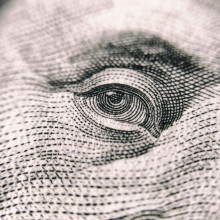
Do blind people suffer from depression because of light deprivation?
We put this question to Professor Russell Foster:
I think it's such an interesting idea because we've published a paper last year on an individual who has no rods and cones but can still regulate their body clock using these new receptors to the light-dark cycle. It's only with the discovery of these cells that we can ask question like that. The assumption then, has been - well, you're depressed because you can't see. We're starting some studies to look at depression in individuals who have those cells but don't have the capacity to see.
How do full spectrum bulbs prevent seasonal affective disorder?
We put this question to Professor Russell Foster:
Russell - If the light is bright enough it actually doesn't matter too much which wavelength it is. When we say these receptors are most sensitive to blue light that's the wavelength if you were to lower the light levels it would then be blue that is effective. If you're using a full spectrum lamp that's bright enough it will be perfectly good. Chris - So this is where people would perch themselves in front of a bright lamp in the morning?
Russell - That's right, yes.
Chris - And this works, does it?
Russell - Remarkably enough it works. Now we're beginning to understand the mechanisms behind it.

Will a red light on the back of the knee prevent jetlag?
We put this question to Professor Russell Foster:
Let's kill this one dead! In '98 a group of researchers at Cornell University suggested that red light behind the knee would train the body clock. This got huge amounts of publicity. A lot of us thought it was nonsense at the time. It was published in Science, incidentally. Five studies around the world tried to replicate the findings and all completely failed. It looks as though there was some artefact in the experimental design of that original paper which was fundamentally flawed and they got it badly wrong. It did cause a huge amount of commotion. Let me assure you, it is nonsense.
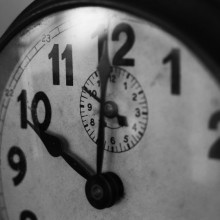
Why are some people more productive in the morning?
We put this question to Professor Russell Foster:
We talked about those clock genes [see Russell's interview] of which we think there are 12-14 of them. Tiny changes in those genes are now being associated with a morning preference - larks as distinct from an evening preference - those people we would describe as owls. You're absolutely right. There are some people, about 10% of the population that light to get up very early, We're talking about 5 in the morning but then they go to bed very early, sort of 7 o'clock in the evening.
Chris - And we've got genes that we can map onto those different behaviours?
Russell - In fact there's one extraordinary study called familial advance sleep-phase syndrome where it's been followed through five generations now. It's one tiny amino acid, a change in one of those proteins. One of those 14 proteins that make up the clock. It's an extraordinary study. We're starting to pick up more and more subtle changes in these genes with morning and evening preference. I should say that this morning and evening preference does shift with time. As one grows up from the age of ten through adolescence into the early 20s there is this tendency to want to go to bed later and later and later and get up later and later. That seems to be a real biological phenomenon. There's some very important consequences I think in terms of our education systems that we might want to discuss. Kat - So maybe having classes later? Russell - Well, the evidence suggests from the University of Toronto. They tested pupils mid morning or mid afternoon and their scores went up by ten percent in the mid-afternoon. What was fascinating was that the older teachers' went down over the same time period.

How does my body know to wake up at my train stop?
We put this question to Professor Russell Foster:
What he's talking about and what I think many of us experience is that you wake up a few minutes before the alarm goes off. The mechanisms behind this have been much discussed. If we jump from our species and talk about honey bees. Honey bees will use their body clock almost like a daily events calendar. They will consult this internal clock to determine when they will visit a specific type of flower at different times of the day. For example they will visit one species at 12 noon and then another species 12 hours later. They're using their body clock to time specific daily events. It's thought that we may be able to do the same. It's not absolutely clear and there may be other mechanisms but the evidence is pretty good that we can act like little bees.

36:51 - Plants have Body Clocks too!
Plants have Body Clocks too!
with Dr Harriet McWatters, Oxford University
Chris - With us now is Dr Harriet McWatters, she's from the department of plant sciences at Oxford University. It will probably amaze a lot of people that plants also have a body clock in the sense of time.
 Harriet - Yes, plants have a body clock which is set up in some ways very much like yours or mine because they have the same problem that you or I do. They live on a planet with a 24hr day with day and night. They need to know what time it is so they can coordinate aspects of their daily life such as petal opening with the rest of the world. Russell has already mentioned bees. Bees fertilise flowers so a flower which had its petals shut when a bee's visiting will not be pollinated. It will not reproduce.
Harriet - Yes, plants have a body clock which is set up in some ways very much like yours or mine because they have the same problem that you or I do. They live on a planet with a 24hr day with day and night. They need to know what time it is so they can coordinate aspects of their daily life such as petal opening with the rest of the world. Russell has already mentioned bees. Bees fertilise flowers so a flower which had its petals shut when a bee's visiting will not be pollinated. It will not reproduce.
Chris - Do the plants do this in the same way as the brain cells Russell was talking about or do they use a totally different sort of clock machinery?
Harriet - The answer to that is both. Each plant cell contains the machinery for a clock very much in the same way as a clock Russell described in animals. There is a feedback loop where a protein eventually causes the switching off of its own production. The actual genes and proteins involved in plants are completely different from the ones involved in animals clocks.
Chris - We all evolved ultimately from some common ancestor: us and plants. We share quite a lot of our genes. I share 60% of my DNA with a banana and I'm not that exceptional. Why do plants have their own genes and we have different ones?
Harriet - The simple answer to that is we don't know. We do know that it appears that clocks are extremely important in that almost every multi-cellular organism we've looked at has a clock. In the four systems that we know best which are the plant, the animal, the fungal clock and also the blue-green algae. The actual mechanisms are completely different meaning that clocks are important enough to have evolved four times in different lineages.
Chris - It must give a massive advantage.
Harriet - It does because it allows you to predict what is going to happen later on. You're not caught by surprise every time the sun goes up. If you are a day-active animal you can wake up and start to hunt before the day arrives. If you are something which is going to be eaten by something which has then come out you can get back to your hiding place. You can anticipate these events rather than always having to respond to them.
Chris - Plants also have a season because they have to do everything they need to do over a scope of a year which is to make leaves, they need to grow, make some blossom, make fruit - effectively have sex to make fruit, reproduce. How does a plant coordinate time through the whole plant?
Harriet - Again there are the clocks in the leaves which appear to be detecting and measuring photoperiod. Some signal is transferred from the leaf to the part of the plant which is going to produce a flower and that tells it hang on, it's going to stop producing these and start producing reproductive tissues such as flowers. This is happening in an individual plant and it's also happening in a population of plants. The clock in a plant leaf is detecting photoperiod in the world and then transmitting the information through the plant to the reproductive axis.
Chris - Does this mean then that if we understand how that works we could exploit it to say, make plants think they've got less time to grow then they have? Then the put more effort into growing quicker so we get more yield from a crop, for example?
Harriet - Yes, potentially. One of the big goals in agriculture is to reduce energy expenditure. Removing the photoperiodic from plant growth is actually very important. For example, with chrysanthemum which are extremely sensitive to photoperiod and also need to be produced at a particular time of year: in November and then again at Christmas time. You need to produce plants using huge amounts of energy. If you could reduce the photoperiodic component of a response they would grow regardless of the daylight if you gave them the right conditions.
Chris - If I take a plant which is well adapted to growing in one part of the world it's used to having a certain length of day, say the equator, because time doesn't really change whether it's winter or summer there and I put it in Scotland where it's going to have very long bright summers and very dark winters would that make a difference?
Harriet - It would make a difference. It might make less of a difference than if you went that way from Scotland down to the equator. Tropical plants are used to growing with very equitable day lengths. Scottish plants require very much more light in the summer time. In my garden at home I have a horse chestnut seedling which grew from a conker I collected in my mother-in-law's garden in Scotland. This poor tree sets leaf several weeks later than the local horse chestnuts in Oxford and sheds its leaves early in the season.
Chris - It can't adapt? One thing Russell was saying is that our brains can retune our body clock. You've done the equivalent of a transatlantic flight for a conker but from Scotland down south. The conker can't reset, why?
Harriet - It doesn't seem to be able to reset so it's got an idea in its little cells what a critical day length is for producing leaves or shedding its leaves. It can't in one generation get over this. The timing of leaf set is set in the genes and it's local to a particular population.
Chris - Scientists have shown that if you give a plant a really hard life for a while then the progeny it produces express genes differently than if you give it a good life. It's almost like it's patterning, it's telling its offspring look, you're gonna have a hard life - you need to be optimised to grow in a bad environment. Do you think the parent wrote this [into its genes]?
Harriet - I think the parent wrote this in. We don't know form a single example whether it is maternal imprinting such as you are suggesting or a simple change in the genetic instruction such that you need sixteen hours of night or fourteen hours of light to produce your seeds. It could be either.
Chris - President Bush has suggested he wants to see people colonising Mars in the next 50 years. We know that plants are the best way to get energy from the sun and turn it into chemical energy that we can use. That means we need to take plants on space missions. Given what you've just said - what are the implications for taking plants from Earth, into space and then also farther afield?
Harriet - There's two things to consider. One is the different arrangement of wavelengths that you get on Mars. Earth plants are adapted to a range of wavelengths that we have here and are very different to a Martian atmosphere. This is one of the reasons Mars looks red. Also the day length is different on Mars so you would need to look into the effect upon day length of growing your plants.
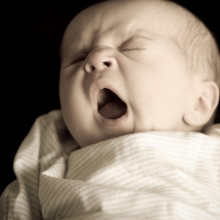
44:26 - Why can't we remember our dreams?
Why can't we remember our dreams?
Professor Mark Blagrove, Professor of Psychology at Swansea University, answered this question...
People differ on whether or not they can remember their dreams. Some people have a great deal of interest in their dreams, have very vivid dreams or their level of anxiety or sleep quality results in people remembering dreams at different amounts each month, say.
In general, for all of us, dreams are very easily forgotten once we wake up if we don't consolidate them or, in other words, if we don't transfer them from short-term to long term memory immediately upon waking.
There's a few theories of why that happens to all of us. One possibility is that our brain neurochemicals, during sleep, are very different from during wake time and so they don't allow us to consolidate memory.
The other thing that's quite possible is that we don't pay attention to our dreams or are unable to do so during sleep. We are unable to remember what occurs to us during sleep. Even people with sleep apnoea who wake up during the night don't know that that happens to them.
Similarly, when we have a dream, we're not consolidating it as it occurs. Indeed, if you have people having a long REM sleep period and you wake them up, once the REM sleep period gets over about 20 minutes you don't find that dreams increase in length very much. It's as if during the dream we forget what was happening. The same happens immediately we wake up: the dream just disappears.
Do we sleep better in blocks of four hours?
We asked Professor Russell Foster:
No. It depends on the individual but most of the time it's an eight hour block. Sometimes you can separate it in the middle with a slight waking up phase and then you go back to sleep again. On the whole, no.

What's the difference between hibernation and aestivation?
We put this question to Harriet McWatters:
They're very much the same thing. They're periods of dormancy to avoid inclement conditions. Hibernation is usually when an animal is trying to avoid winter. Aestivation is in hot countries where it's trying to avoid summer. It's avoiding the worst times of year.
Is melatonin any use for insomnia?
We asked Professor Russell Foster: Melatonin is a hormone produce in the pineal gland. It's highly regulated by light. It's produced at night. There's two bits of evidence to suggest it might be useful. 1, if you take melatonin about 70% of people will fall asleep; 2, it may help you shift your body clock. The evidence emerging is that yes, it may help you sleep. Chris - Is it harmful?
Russell - We don't have any evidence that it's harmful. I certainly wouldn't recommend using it without discussing with your GP first.
Do bacteria sleep or have a pattern to their activity?
We put this question to Dr Harriet McWatters: Ordinary bacteria such as you would find in your gut probably not. There is a class of blue-green algae which are often called cyanobacteria which have very strong circadian rhythms.
Can tress or plants feel?
We put this question to Dr Harriet McWatters:
Plants can detect it when you damage them in some way. They are usually more sensitive to things like caterpillars eating them, which will happen in their natural life. For example, an oak tree which is being attacked by caterpillars will respond by producing tannins in its leaves, which makes its leaves bitter. What's even more interesting is that trees adjacent to the one that's being attacked can somehow detect some signal and will also start to produce tannins in their leaves, even before caterpillars have been eating. So given that, I think they can almost certainly detect if a branch has been cut off. The problem is that they don't really have any response to that except to grow another branch.
Related Content
- Previous Remembering Your Dreams
- Next Lead: Chemistry in its element











Comments
Add a comment